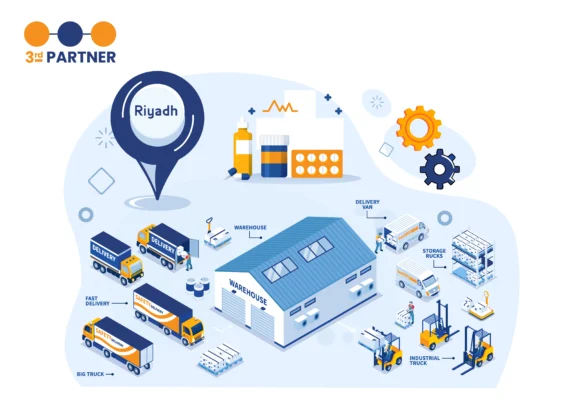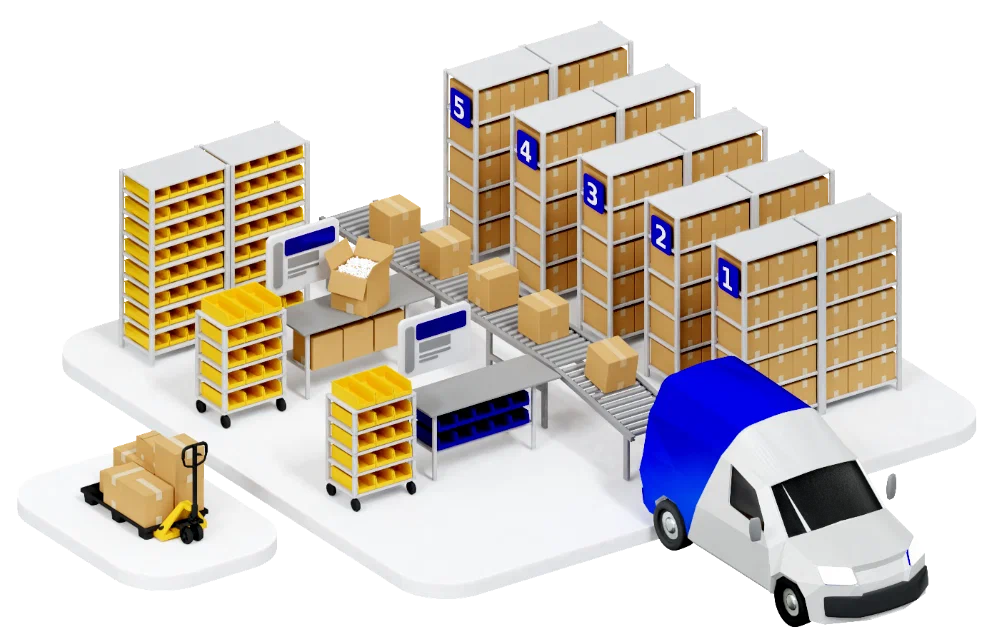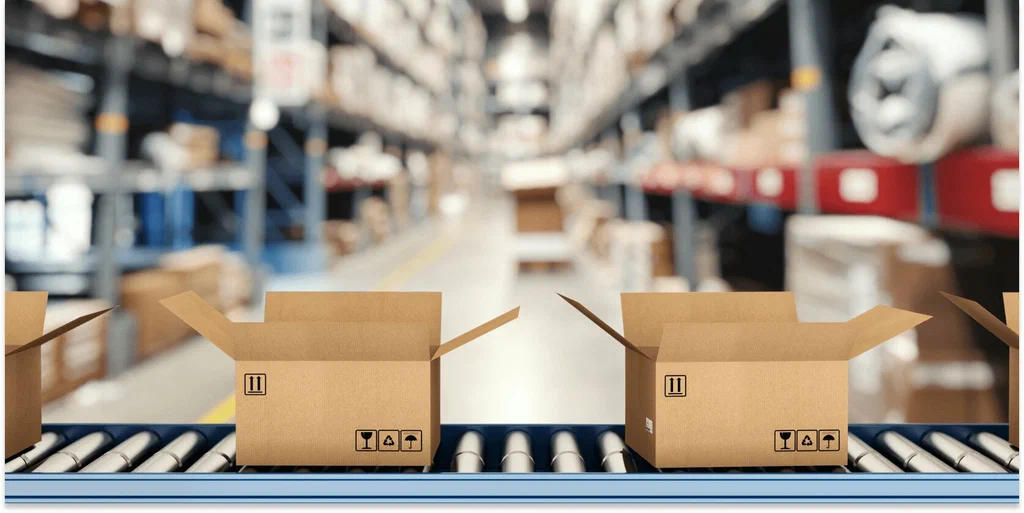Cold chain logistics for pharmaceuticals is a critical aspect of the healthcare industry. The importance of maintaining an unbroken cold chain cannot be overstated, as it ensures that temperature-sensitive pharmaceuticals retain their efficacy and safety from production to administration. In this article, we will delve into the intricacies of cold chain logistics for pharmaceuticals, focusing on its significance, the challenges faced, and the solutions that ensure the delivery of quality medicines in Riyadh.
Understanding the Cold Chain for Pharmaceuticals
Managing the cold chain logistics for pharmaceuticals is a multifaceted endeavor encompassing a range of activities designed to regulate the temperature and environmental conditions of medications and other pharmaceutical products throughout the supply chain.
This spans from production and storage to transport and distribution. Beyond planning and coordinating these processes, manufacturers, distributors, and healthcare providers can greatly benefit from technological advancements that maintain the quality and integrity of these products, thereby ensuring consumer safety.
Importance of Cold Chain Logistics for Pharmaceuticals
Pharmaceuticals are often highly sensitive to temperature variations. Medications such as insulin and vaccines can lose their efficacy in extreme colds, while some sensitive antibiotics degrade if exposed to heat for extended periods. Beyond reduced effectiveness, some medications, chemicals, and biological products can become harmful if stored in inappropriate conditions.
Given the severe repercussions of refrigeration errors, delivery delays, or other disruptions, stringent regulations are enforced by government and industry authorities. Companies involved in the cold supply chain must engage in constant monitoring, swiftly resolve issues, and maintain thorough documentation. Any oversight is met with strict penalties.
Maintaining consistency and reliability is crucial for earning consumer trust. By implementing best practices across all facets of cold chain operations and staying abreast of industry trends, companies can ensure the quality of their products. These efforts ultimately enhance the company’s reputation and provide a competitive advantage in the market.
Challenges in Cold Chain Logistics for Pharmaceuticals
Managing the cold chain for temperature-sensitive pharmaceuticals involves navigating numerous obstacles that can affect the integrity and effectiveness of these products. Here are the primary challenges:
Environmental Challenges
Environmental factors play a crucial role in maintaining the cold chain logistics for pharmaceuticals, requiring robust measures to address potential issues.
- Fluctuations in ambient temperature during transportation and storage can compromise product stability. Extreme weather events, such as heat waves or cold snaps, add to the risk.
- High humidity can damage packaging and lead to product degradation. Controlling humidity levels is particularly important in certain climates.
- Varying environmental conditions across different regions complicate the task of maintaining a consistent temperature throughout the supply chain.
Logistical Challenges
The complexities of managing a global cold chain present significant logistical hurdles.
- Coordinating air, sea, and land transportation can lead to temperature excursions due to different environmental conditions and handling practices.
- Navigating diverse customs regulations and ensuring compliance with varying standards can cause delays and disruptions.
- Some regions lack temperature-controlled storage facilities or reliable transportation options, hindering effective cold chain management.
- Seamless communication and coordination among manufacturers, logistics providers, and distributors are critical to maintaining the cold chain’s integrity.
- Emergencies like unplanned events, such as natural disasters, political unrest, or pandemics, can disrupt transportation routes and affect the cold chain.
Temperature Excursions
Temperature excursions, when products are exposed to temperatures outside the prescribed range, pose a significant challenge in the management of cold chain logistics for pharmaceuticals.
According to the World Health Organization (WHO), a temperature excursion occurs when a Time Temperature Sensitive Pharmaceutical Product is exposed to temperatures beyond the specified limits.
These include system failures, human error, inadequate air handling units, mechanical breakdowns, transportation delays, improper handling, and the use of non-refrigerated vehicles.
Temperature excursions can result in product loss, reduced efficacy, and potential adverse reactions in patients.
Regulatory Compliance
Maintaining compliance with stringent regulations is essential for pharmaceutical cold chain management.
- Compliance Requirements: Adhering to regulations involves keeping temperatures within specified limits and ensuring all processes meet regulatory standards.
- Documentation and Corrective Actions: Detailed documentation and the ability to respond to temperature excursions with corrective actions are crucial. Developing a Corrective Action & Preventive Action (CAPA) system helps address and mitigate issues.
- Transparency and Monitoring: Lack of end-to-end transparency and rapid environmental changes increase compliance risks. Investing in technologies that provide real-time tracking and monitoring ensures visibility and control over the cold chain.
- Regular Audits and Updates: Conducting regular audits and updating quality management systems are necessary to adapt to evolving regulations and maintain compliance.
To effectively manage these challenges, pharmaceutical companies must implement robust monitoring systems and maintain strict control over environmental conditions throughout the product lifecycle. This involves using data loggers, sensors, and thermal packaging to ensure continuous temperature control and immediate response to any deviations.
By strategically planning, investing in technology, and adhering to rigorous compliance practices, pharmaceutical companies can maintain the integrity and efficacy of their products, ultimately safeguarding patient health.
The Challenge of Transporting Temperature-Sensitive Pharmaceuticals
The importance of maintaining prescribed temperature ranges for temperature-sensitive pharmaceuticals throughout their entire journey, including storage at their final destination, cannot be overstated. Pharmaceutical manufacturers bear the responsibility of ensuring product quality until its final use.
Pharmaceuticals that are sensitive to high temperatures can become less effective or even toxic, while those sensitive to low temperatures can lose their therapeutic properties if frozen. Improper transport or storage of these medications can have serious health implications, potentially being life-threatening.
To preserve the efficacy of their products, pharmaceutical companies ship a significant proportion of their cargo as either chilled or frozen.
Generally, some of the products in the cold chain logistics for pharmaceuticals are transported in a chilled environment ranging from +2°C to +8°C. Products requiring these conditions must not freeze or become too warm in transit, as their potency would be affected. For instance, Ventolin, used to aid breathing, is transported at chilled temperatures.
and some pharmaceutical products require temperatures colder than -15°C. It is challenging to visually detect if a product has thawed and then re-frozen, so laboratory assessments may be necessary before use. Organs and tissues, for example, are usually transported as frozen cargo.
Maintaining these temperature ranges is essential to ensure the effectiveness and safety of pharmaceuticals, ultimately safeguarding the health of individuals who rely on these medications.
Best Practices in Cold Chain Logistics for Pharmaceuticals
The primary goal of the pharmaceutical industry is to protect public health. Companies must show their dedication to ensuring the safety and well-being of individuals. Achieving this goal can be challenging but is possible through the following practical strategies:
Implement Real-Time Data Monitoring and Analysis
The most critical task in cold chain management is maintaining the correct temperature throughout the entire process. Any deviations must be promptly reported and addressed. Here’s how to enhance monitoring:
- Use sensors that detect even minor environmental changes and alert users immediately to take corrective action.
- Implement robust analytics to help managers review historical data for better planning and decision-making.
- Develop detailed standard operating procedures (SOPs) for communication and actions to handle unexpected temperature excursions.
Perform Regular Risk Evaluations
Routine risk assessments are vital for identifying potential hazards and vulnerabilities in the cold chain logistics for pharmaceuticals that could compromise product safety and quality. Here are some tips:
- Follow a structured approach to create effective mitigation strategies.
- Conduct risk assessments at least once or twice a year, scheduling them in advance to prepare all involved parties and minimize disruptions.
- Periodically review the effectiveness of the adopted strategies to ensure continuous improvement.
Provide Comprehensive Worker Training
Everyone involved in cold chain management should understand the importance of their role and its impact on end users. This can be achieved through regular training and continuous learning:
- Implement and schedule training programs covering temperature control and the impact of temperature excursions on product quality.
- Tailor training programs are based on the specific roles of personnel.
- Provide quick, mobile-friendly learning modules on regulatory updates and new industry information.
Build Partnerships
Cold chain management often involves multiple stakeholders, such as manufacturers, wholesalers, logistics providers, and healthcare facilities. Effective collaboration is essential for success. Here’s how to foster strong partnerships:
- Readily share crucial information with partners, such as estimated time of arrival, incident reports, and contingency plans.
- Conduct regular audits and assessments of stakeholder practices.
- Use a secure central dashboard that all stakeholders can access to communicate and share information.
By following these best practices, pharmaceutical companies can ensure the integrity and efficacy of their products, ultimately safeguarding public health and building trust with consumers.
Conclusion
Cold chain logistics for pharmaceuticals is a critical component of the healthcare supply chain, ensuring that temperature-sensitive medications remain safe and effective from production to administration. In Riyadh, maintaining an unbroken cold chain requires advanced technology, robust monitoring systems, proper training, and reliable logistics partners.
The “3rd Partner” Company stands out as a leader in this field, offering comprehensive cold chain solutions, expertise, and a commitment to quality. If you are looking for a reliable partner to handle your cold chain logistics needs, look no further than the “3rd Partner” Company. With our advanced technology, expertise, and commitment to quality. Get in touch with us to discover more about our services and how we can assist you.











